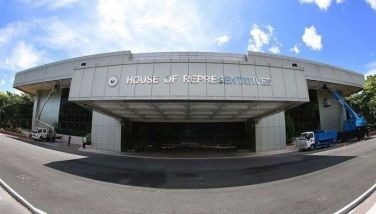AEC 2015

What’s the AEC? Few Filipinos know at this point, but everyone may be feeling its impact soon. It’s the ASEAN Economic Community, and it will be created at the end of the year.
Free trade means greater competition, which can kill certain enterprises and cost jobs. But for those prepared to meet the challenges of foreign competition, the AEC will also mean improved access to a regional market of over 650 million people, plus tariff-free access to raw materials and other production components.
Those worried about freer trade can consider that economic liberalization turned communist China into the world’s second largest economy, and is now transforming former international pariah Myanmar.
The 10-member Association of Southeast Asian Nations was inspired by economic integration in the European Union. But seeing what’s happening in the eurozone, ASEAN is aiming for a more limited type of economic community, with a common currency unlikely in the near future.
Within our region, preparations for the AEC are intense in the four other founding members of ASEAN. The Thais have even opened special schools to learn other languages in Southeast Asia and facilitate doing business within the region. Singapore, the most competitive and prosperous ASEAN member, has done its homework and is seen to be the best prepared for economic integration.
Creation of the AEC means the freer flow of capital, goods, services and skilled labor. ASEAN has a combined GDP of $2.5 trillion, with intra-trade amounting to about $1 trillion. This, however, is estimated to account for only about 25 percent of the potential; “AEC 2015” hopes to boost this to 50 percent. In unity there is strength; being part of a single market also allows ASEAN states to have greater bargaining power with other regions and countries.
But setting up a single market is never easy, as the EU has shown, and even more so among countries with widely diverse levels of economic and political development.
Even Malaysia, seen to be the second best prepared for AEC 2015 after Singapore, has warned that poorer ASEAN members may have to be allowed to keep some sectors particularly agriculture protected.
* * *
AEC 2015 aims to harmonize product standards, customs procedures and tariffs. Non-tariff trade barriers will be removed as well as restrictions on setting up businesses and the provision of services across the region. Financial standards will be harmonized to include rules on disclosure requirements. For the free flow of skilled labor, professional qualifications will also be harmonized. Industries will be integrated so ASEAN will become a single production base with regional sourcing.
Free trade can be good for breaking up the numerous monopolies and oligopolies awarded and sustained through political patronage in our country, which have often meant expensive but crummy goods and services. Competition compels quality upgrades. But without sufficient government support to prepare for competition, certain sectors may suffer.
Worse, many Pinoys are completely unaware of the competition that will be coming soon. Cheap goods from China killed our local textile industry, with apparel manufacturers also affected. The furniture industry also took a hit. There are economic provisions in the Constitution that go against the objectives of AEC 2015. Will we be able to keep up with the rest of the region?
* * *
Among ASEAN members, Pinoys seem to have a low awareness of belonging to a regional grouping. There is no sense of ASEAN identity here. Our distance from the main land cluster of Southeast Asian nations is one of the reasons; another is that our attention is still focused on the United States, away from our own region.
The sense that ASEAN is nothing more than a regular gabfest has been reinforced for Pinoys by the grouping’s failure to come up with a common stand on some of its members’ maritime disputes with China.
Earlier this week in Jakarta, seat of the ASEAN secretariat, I asked Indonesian Vice President Jusuf Kalla if ASEAN should take a greater role in resolving the disputes. He said a peaceful resolution would be good for the ASEAN economy, but there is “no solidarity” within the grouping.
Until late yesterday afternoon at the ASEAN Regional Forum with the US, Japan and China in Kuala Lumpur, ASEAN members were still struggling to agree on the wording of a joint statement on the dispute.
Apart from the lack of a regional identity, ASEAN’s organizational structure can also be a weakness. At the Japan-ASEAN Media Forum in Jakarta last weekend, someone wanted to know: if their national leader wanted to ask ASEAN something, who should he call? The ASEAN secretary general, according to a supporter of the grouping.
But the secretariat is seen merely as a compiler of documents and organizer of events. I doubt if many people even know who the secretary general is; he has no power over ASEAN leaders and is seen as a glorified paper pusher. Doubts have always been raised on the capability of ASEAN to implement AEC rules and achieve its goals.
I’ve been told many times by citizens of other Southeast Asian countries that ASEAN states also see the Philippines as a distant member. This could be one of the reasons why we’re having difficulty trying to get regional support in our maritime dispute with China.
The distance has intensified, according to the observers, under the current administration. They think President Aquino has a poor grasp of foreign affairs and geopolitics. P-Noy, they point out, has not even bothered to build personal friendships with any of the ASEAN leaders.
These ASEAN citizens hope that whoever wins in the 2016 race in the Philippines will work to improve ties with the grouping.
Perhaps regional economic integration will fare better than maritime conflict resolution for ASEAN.
An AEC booster at the forum said that if ASEAN members stuck together, the grouping could become the fourth largest economy by 2050.
If we do our homework, the AEC will open opportunities for the Philippines to achieve sustained and inclusive economic growth. But by the time the AEC is born, we will be in the thick of a bruising election battle.
Unprepared for economic integration, we may miss the opportunities, and suffer the consequences of lagging farther behind our more competitive neighbors.
- Latest
- Trending




























